Tempura or shrimp tempura is a Japanese dish consisting of shelled shrimps, dipped in batter and deep fried. This is, I think, one of the most favorite Japanese food of Filipinos. Aside from shrimps, you can also make vegetable tempura to decorate or to make it more appetizing. Just slice some eggplants and carrots into thick strips, get some whole string beans then dip it in tempura batter then deep fry it.
Shrimp Tempura: A Taste of Japan with a Filipino Twist
Shrimp tempura is one of those dishes that feels like a special treat, yet it’s incredibly simple to make at home. The golden, crispy coating wrapped around plump, juicy shrimp is loved by many Filipinos, myself included! My first taste of this Japanese dish wasn’t in a restaurant, surprisingly, but in my Tita Nena’s kitchen in Cebu. She had a knack for recreating dishes she’d tried when traveling, and during a visit to Japan, she fell in love with tempura. She told us that while tempura’s roots go way back in Japan, she knew it would be a hit back home in the Philippines. The moment I bit into that first piece, I was hooked, and now it’s a dish I return to time and again.
What Makes Shrimp Tempura So Special?
Shrimp tempura is unique in the way it combines simplicity and elegance. It involves just a few basic ingredients—shrimp, flour, and egg—yet when cooked right, the result is a light and crisp texture that melts in your mouth. My cousin Jojo, who worked at a Japanese restaurant in Manila for a few years, once explained to me the importance of the batter’s consistency. The goal is a thin, even coating that allows the shrimp’s natural sweetness to shine through while still giving that satisfying crunch.
Another aspect of tempura that makes it so appealing is its versatility. Although shrimp is the classic choice, tempura can include vegetables like carrots, eggplant, and string beans, which add vibrant colors and textures to the plate. Adding these veggie options is something my brother Alex always insists on, especially when we’re serving tempura at family gatherings. It makes for a beautiful, balanced meal that everyone can enjoy.
Prepping the Shrimp for Perfect Tempura
Preparing shrimp for tempura is straightforward, but paying attention to small details makes all the difference. First, you’ll want to remove the head and shell of each shrimp, leaving the tail intact. Keeping the tail on not only makes the shrimp look more appealing but also makes it easier to dip them in the batter and eat. After peeling, it’s essential to devein the shrimp to remove any grit, as it keeps the dish clean and pleasant.
One trick my Uncle Benny taught me is to make a few shallow crosswise cuts along the inner side of each shrimp. This technique prevents the shrimp from curling up when fried, which ensures a more even fry and makes the tempura look just like the ones in restaurants. A light seasoning of salt and a squeeze of calamansi juice brings out the natural flavor of the shrimp and adds a hint of that tangy citrus we love in Filipino cooking. It’s amazing how just a touch of calamansi can elevate a dish!
Creating the Perfect Tempura Batter
The batter is where the magic happens in shrimp tempura. Achieving the right consistency and lightness in the batter can seem intimidating, but it’s actually simple with a few tricks. Start by beating one egg, then add cold water and beat again. The coldness of the water helps create a light, crisp texture when frying, which is key to achieving that authentic Japanese tempura.
Once the egg and water are combined, add all-purpose flour, a bit of baking powder, and a dash of salt. My mom would sometimes add a tiny pinch of MSG, which she swears adds depth of flavor. The baking powder is essential as it helps the batter puff up just slightly, giving it that airy quality. It’s important not to overmix; you want a slightly lumpy batter as overmixing can make the coating heavy and doughy.
Frying Shrimp Tempura to Golden Perfection
The next step is frying, which is both an art and a science. In a deep pan, heat about two inches of cooking oil until it reaches the right temperature, around 350°F. You’ll know it’s ready when a drop of batter sizzles and rises to the surface almost immediately. My Lola, who taught me to cook, always said that patience is key here; frying tempura at too low a temperature makes it soggy, while oil that’s too hot will burn the batter before the shrimp are cooked through.
Dip each shrimp into the batter, holding it by the tail, then carefully lower it into the oil. Don’t overcrowd the pan, as this can lower the oil temperature and make the tempura greasy. Fry until the shrimp is golden brown, which usually takes about two minutes, and then drain on a wire rack or paper towels to remove excess oil.
Serving Shrimp Tempura with Homemade Tempura Sauce
No experience is complete without a delicious dipping sauce. Traditional tempura sauce has a perfect balance of savory and sweet flavors that complements the crispy shrimp. To make it, combine soy sauce, mirin, and a bit of sugar, then simmer for about five minutes. Let it cool before serving. The sauce is a beautiful pairing with the tempura’s crispy texture, adding a burst of flavor without overpowering the delicate batter.
Whenever I make shrimp tempura, I’m reminded of family gatherings and the joy of sharing a simple, delicious meal. There’s something so satisfying about creating this dish from scratch, knowing it brings a little taste of Japan into our Filipino kitchens. Even my nephew, who usually won’t touch seafood, eagerly digs in when tempura is on the table. It’s dishes like these that remind me how food can bring everyone together, no matter their tastes.
A Little History: The Origins of Tempura
Interestingly, tempura didn’t actually originate in Japan. It’s said to have been introduced by Portuguese missionaries in the 16th century, who brought their deep-frying techniques to Japan. The Japanese quickly embraced and perfected the method, and tempura became a popular part of their cuisine. This fusion of cultural influences makes tempura not just a delicious treat but a fascinating blend of history and flavor.
Making shrimp tempura at home is not just about enjoying a delicious dish; it’s about connecting with culinary traditions that span across time and cultures. So the next time you’re craving something special, give this shrimp tempura recipe a try and bring a taste of Japan to your home. And who knows? Maybe, like me, you’ll discover that it’s the perfect dish to share with loved ones. Like to try other version of tempura? Check this chicken tempura recipe!
Shrimp Tempura
Ingredients
- 1/2 kilo large shrimps
- 1 Tbsp. calamansi juice
- 1 tsp. salt
- cooking oil for deep frying
For the batter:
- 1 pc egg
- 1/2 cup water
- 1 1/4 cup all-purpose flour
- 1/2 tsp. baking powder
- 1/2 tsp. salt
- 1/2 tsp. MSG
Tempura sauce ingredients::
- 1 cup fish or shrimp broth
- 1/2 cup soy sauce
- 1/4 cup rice wine
- 2 tsp. sugar
- 4 cloves minced garlic
- 1/2 cup grated radish or labanos
Instructions
How to cook Shrimp Tempura:
- Remove the head and shell of shrimps but leave tail intact. Devein.
- Make crosswise slit on inner side of shrimp, so it would not curl when cooked.
- Season with salt and calamansi juice. Set aside.
- Beat the egg. Add water and beat again. Add all the flour, baking powder, salt and MSG.
- In a deep pan, heat about 2 inches deep cooking oil. Dip shrimps in batter and drop one by one in hot oil.
- Fry until golden brown. Serve hot with tempura sauce.
To make tempura sauce:
- Mix all ingredients, cook for 5 minutes. Cool before serving.
Notes
Cooking Tips:
Keep the Shrimp Cold: Before dipping the shrimp in the tempura batter, make sure they are properly chilled. Cold shrimp will result in a crispier texture when fried. You can place the shrimps in the refrigerator for about 15-20 minutes before cooking to ensure they are adequately chilled. Use Sparkling Water or Club Soda: For an extra light and airy tempura batter, consider using sparkling water or club soda instead of regular water. The carbonation in these beverages creates bubbles in the batter, resulting in a lighter and crispier coating on the shrimp. Fry in Small Batches: To achieve evenly cooked and golden-brown tempura, it's crucial not to overcrowd the frying pan or deep fryer. Fry the shrimp in small batches, allowing them enough space to cook evenly and ensuring that the oil temperature remains consistent. Overcrowding can lead to uneven cooking and a greasier end result.
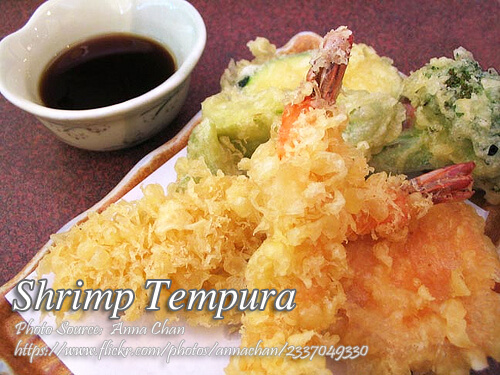

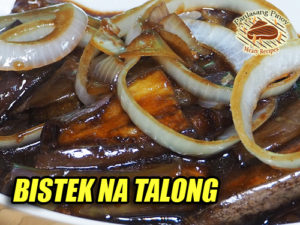
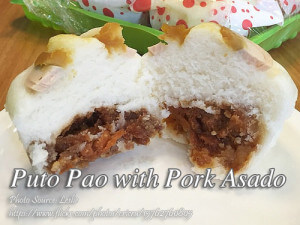
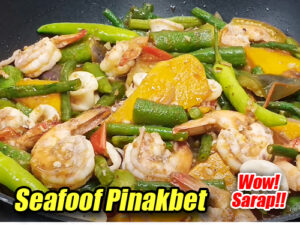
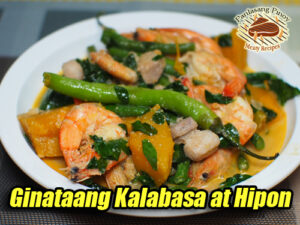
Hi. Can you please suggest an alternative to the rice wine in making the tempura sauce?
Hi Ada, You can use mirin or white wine as an alternative.
Hi is the msg optional? What diff will it make? I added more wAter and a beer. Came out great!
Hi Janelle, yes msg is optional but Japanese always use msg in their cooking.
I want to learn more about cooking pinoy delicious food.thanks to your site keep it up!
Hi Maricar, you are welcome! I do hope you will frequently visit my blog.